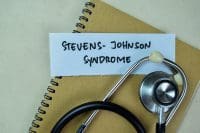There is always an easy solution to every human problem—neat, plausible, and wrong.
—H. L. Mencken
Most people consider data important, maybe even very important—but boring. This may be so. But data gathered, presented, shared, analyzed, and put to use to improve health care are not just important but exciting.
Certainly no one was bored at Rhythms in Quality, the 4th Annual Data Use Conference of the National Database of Nursing Quality Indicators® (NDNQI), held in January in New Orleans. Attendees were excited, even passionate. Here’s why: Finally, hospitals and nurses are capturing and converting into data what nurses actually do and how their actions affect patient care.
NDNQI is the only national nursing quality measurement program that gives hospitals unit-level performance reports with comparisons to national averages, percentile rankings, and other important data. Nursing-sensitive indicators reflect nursing-care structure, process, and outcomes. Currently, more than 1,500 participating U.S. hospitals report to NDNQI and use comparative data about nursing. The data are real, they’re important, and they’re changing the way nursing is practiced.The field of information technology (IT) launched the effective analysis of nursing practice, providing longitudinal and user-friendly access to data for the first time. IT helps identify, analyze, and differentiate nursing actions, which may finally bring the cost of nursing out of the hospital room rate.
NDNQI is positioned to revolutionize nursing by providing a feedback loop for analyzing and advancing interventions that are unique to nursing. (Which interventions make a difference? Which ones make no difference? Which ones do harm?)NDNQI can provide hard data on large populations of patients. Its huge longitudinal database can quickly identify differences in how care is delivered and whether an intervention is successful, providing valuable data for both practitioners and researchers.
Norma Lang, PhD, RN, FAAN, FRCN, made these points and more in her keynote address. She described what has been accomplished and what remains to be done. She emphasized the importance of chief nursing officers’ participation in selecting, implementing, and evaluating hospital information systems. Here’s the long and short of her speech:
- Any information system that doesn’t meet nursing’s needs will be a costly failure for the organization.
- The system chosen will affect the practice of every healthcare professional in the facility.
- It will either collect or fail to collect data in a user-friendly fashion; the data will either enable or inhibit collection of information that leads to improvements, design, redesign, and enhancement of service delivery, quality, and research.
- If selection of the information system is driven mainly by the chief financial officer or chief information officer without the participation of nurse leaders, nursing and its contributions will be lost in the huge clinical, financial, and policy decisions that are based on these data.
Moreover, Lang said, eventually one click of a computer mouse might just do it all: obtain the documentation, decision support, reports, incentives, and research required. Already, she noted, a research synthesis process exists that produces actionable knowledge for key nursing conditions and phenomena. Terminology has been standardized, and we are capable of securing and analyzing valid and reliable operational and research data.
However, with success will come new and often complex challenges, which will require careful and thoughtful solutions. It will not be easy, but it will be right. Thanks to NDNQI, we finally have data that will do good—a lot of good.
Leah Curtin, RN, ScD(h), FAAN Executive Editor, Professional Outreach American Nurse Today


















